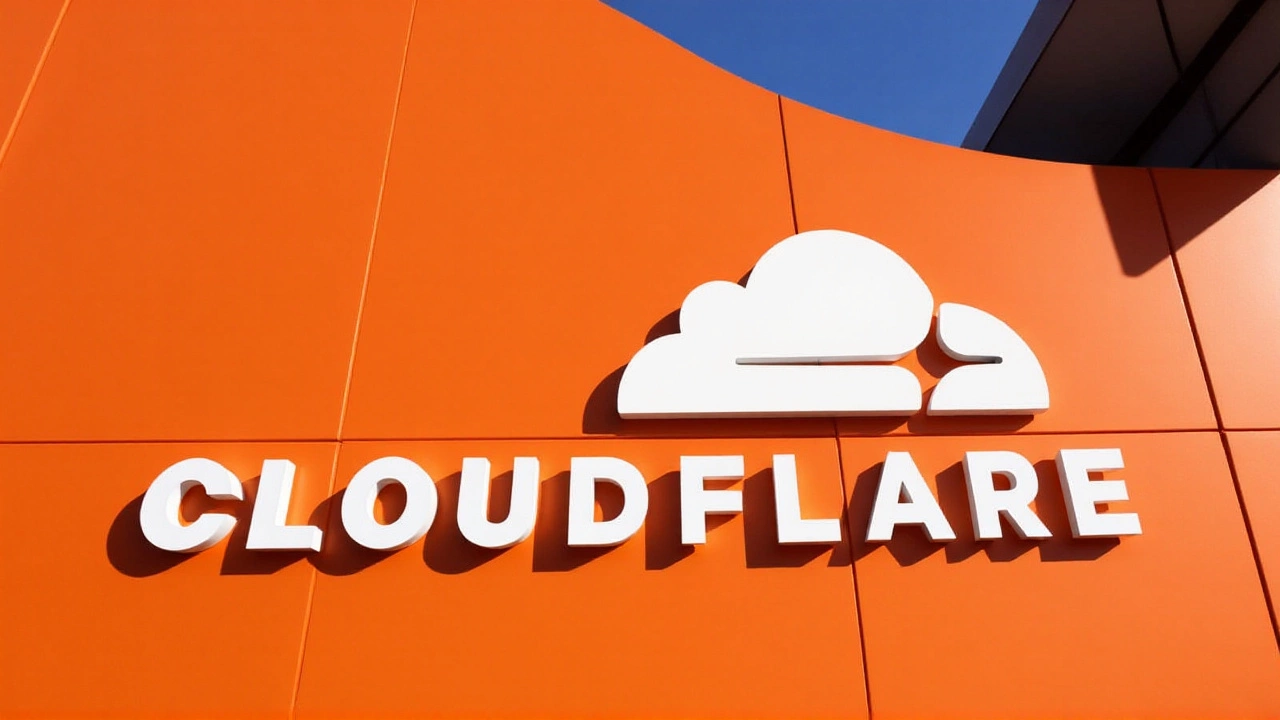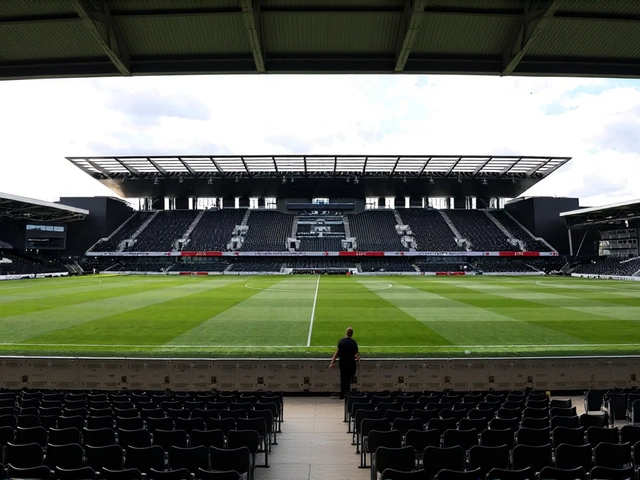At 11:30 UTC on November 18, 2025, the internet stuttered. Not because of a DDoS attack, not because of a cable cut — but because Cloudflare, the invisible backbone powering millions of websites, quietly collapsed under the weight of its own backend systems. By the time Cisco ThousandEyes issued its first alert at 6:30 AM PDT, users across the globe were already seeing error screens on X, OpenAI, and Anthropic. The twist? The network paths to Cloudflare looked perfectly fine. It wasn’t the pipes that were clogged — it was the engine.
What Went Wrong Behind the Scenes
Cisco ThousandEyes, the network intelligence arm of Cisco Systems, Inc., didn’t see latency spikes or packet loss. What they saw was worse: a cascade of HTTP 5XX errors. These aren’t network problems. They’re server failures — the digital equivalent of a restaurant’s kitchen going dark while the front door stays open. Customers line up. The host smiles. But no food comes out.
Cloudflare’s infrastructure, headquartered in San Francisco, serves roughly 30 million websites. That includes everything from small blogs to AI chatbots handling millions of queries daily. When Cloudflare’s origin servers stopped responding, it wasn’t just one site down. It was a domino effect. X couldn’t load tweets. ChatGPT froze mid-response. Claude AI went silent. And because so many services rely on Cloudflare for DNS, security, and caching, the outage rippled far beyond the obvious names.
Global Reach, Local Impact
The outage didn’t care about time zones. From Tokyo to Johannesburg, users reported the same thing: "This site can’t be reached." Cisco ThousandEyes’ global monitoring network — with vantage points in over 1,800 locations across 180 countries — confirmed the issue was universal. No region was spared. Even businesses in rural areas relying on Cloudflare for e-commerce checkout systems saw sales plummet during peak hours.
Tom’s Guide called it "a huge chunk of the internet" — and they weren’t exaggerating. While the exact number of affected sites remains unconfirmed, the pattern was unmistakable: if a service used Cloudflare for any part of its infrastructure, it was likely down. And that’s nearly everything.

Who Fixed It — and Why We Still Don’t Know How
By late afternoon UTC, Dane Knecht, Cloudflare’s Chief Technology Officer, confirmed via The Independent that services were "fully operational." No fanfare. No press conference. Just a quiet update. The remediation had worked. But the root cause? Still a mystery.
Neither Cloudflare nor Cisco ThousandEyes disclosed what triggered the backend failure. Was it a bad code deploy? A misconfigured cache purge? A hardware cascade? The silence speaks volumes. In an industry where transparency is increasingly demanded, this opacity is unsettling. Especially after Cloudflare’s last major outage in June 2022 — which lasted 30 minutes and was quickly explained with a detailed post-mortem.
This time, the response was swift but opaque. And that’s what worries engineers more than the outage itself.
Why This Matters More Than You Think
Cloudflare isn’t just another tech company. It’s the plumbing of the modern web. Think of it like the power grid for websites. You don’t notice it until the lights go out — and then you realize how much you depend on it.
OpenAI doesn’t run its own global CDN. Anthropic doesn’t maintain its own DNS infrastructure. X relies on Cloudflare to absorb bot attacks and speed up tweet delivery. When Cloudflare stumbles, these giants don’t just slow down — they vanish. And the ripple effects aren’t just technical. They’re economic. Ad revenue drops. Customer trust erodes. Developers lose hours debugging what turns out to be someone else’s problem.
And here’s the kicker: there are few alternatives. Most companies don’t have the resources to replicate Cloudflare’s global edge network. Migrating isn’t a switch you flip. It’s a months-long project. So we’re stuck — dependent on a single provider that, despite its scale, still can’t explain why its own systems failed.

What Comes Next?
Cloudflare says it’s done. But the real work begins now.
Internal teams are likely poring over logs, replaying events, and rebuilding safeguards. Meanwhile, enterprises are quietly evaluating redundancy plans — even if it means paying more for multi-CDN setups. Some startups are already experimenting with hybrid architectures, using Cloudflare alongside Fastly or Akamai as a fallback.
Regulators aren’t breathing down their necks yet — but they’re watching. The European Commission has flagged critical internet infrastructure as a potential systemic risk. In the U.S., the FCC and CISA have issued advisories on third-party dependencies. This outage could be the wake-up call that forces a new era of resilience standards.
For now, we got lucky. The fix came quickly. But next time? There’s no guarantee.
Frequently Asked Questions
How long did the Cloudflare outage last on November 18, 2025?
The outage began at 11:30 UTC and lasted approximately 7–8 hours, with services fully restored by the time Dane Knecht confirmed resolution in the afternoon. Cisco ThousandEyes detected the issue at 13:30 UTC, and while remediation was underway, full restoration wasn’t confirmed until several hours later. Exact end time remains unpublicized, but user reports indicate normalcy returned before 20:00 UTC.
Which major services were affected by the Cloudflare outage?
Confirmed services included X, OpenAI (including ChatGPT), and Anthropic (Claude AI). Additional platforms using Cloudflare’s DNS, CDN, or security services also experienced disruptions, though no comprehensive list was released. Smaller sites relying on Cloudflare’s free tier were likely affected too, but went unreported.
Why didn’t Cloudflare’s network show signs of failure before the outage?
Cisco ThousandEyes confirmed that front-end network metrics — latency, packet loss, routing — remained stable. The issue was internal: Cloudflare’s origin servers failed to process incoming requests, triggering HTTP 5XX errors. This means the problem was software- or configuration-related, not a physical or network-level failure. It’s like a traffic light turning green, but all the cars’ engines suddenly died.
Is Cloudflare’s infrastructure too centralized to be reliable?
Cloudflare’s edge network is globally distributed, but its core control systems and origin server logic are centralized — making them single points of failure. While its CDN and DDoS protection are robust, backend dependencies remain a vulnerability. Experts warn that over-reliance on one provider for critical web infrastructure creates systemic risk. The November 18 outage exposed how fragile the "internet of dependencies" has become.
Could a similar outage happen again soon?
Yes — and it likely will. Cloudflare has not disclosed the root cause, meaning the fix may be temporary. Without transparency, other providers can’t learn from it. Even with safeguards, complex systems are prone to cascading failures. History shows that major CDNs have outages every 1–2 years. The real question isn’t if — it’s when, and whether companies have backup plans.
What should businesses do to protect themselves from future Cloudflare outages?
Companies relying on Cloudflare should consider multi-CDN strategies, using providers like Akamai or Fastly as failovers. Implementing DNS redundancy with providers such as Cloudflare + Google Cloud DNS or Amazon Route 53 can also help. For critical services, caching static content locally and using service workers can maintain partial functionality during backend failures. Testing failover procedures quarterly is no longer optional — it’s essential.






